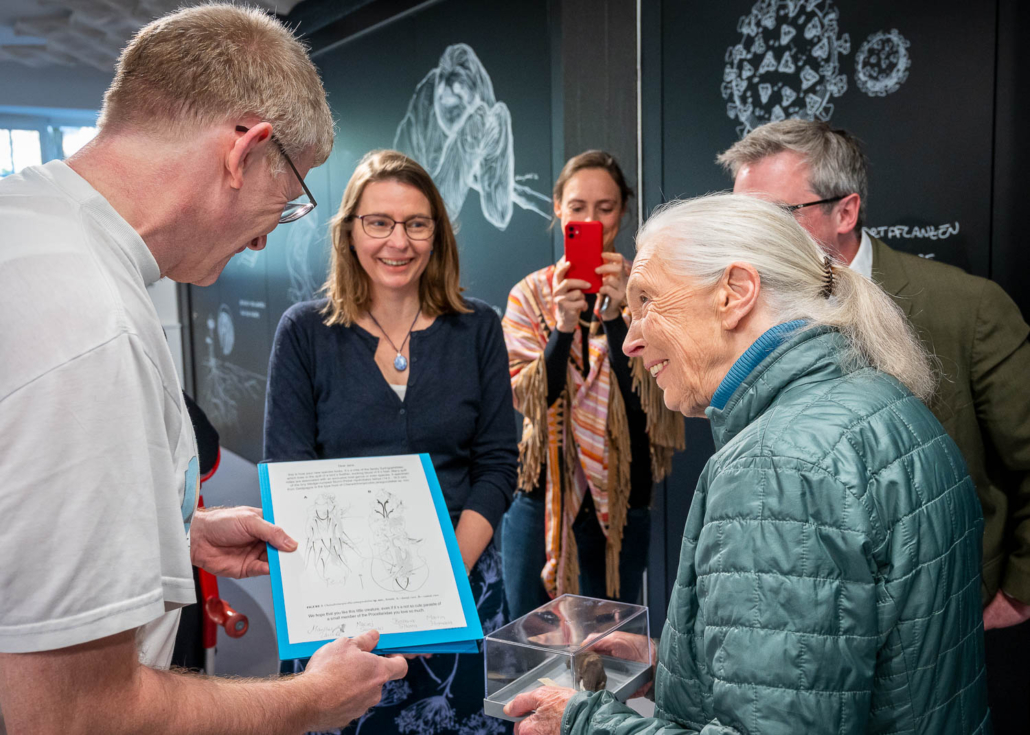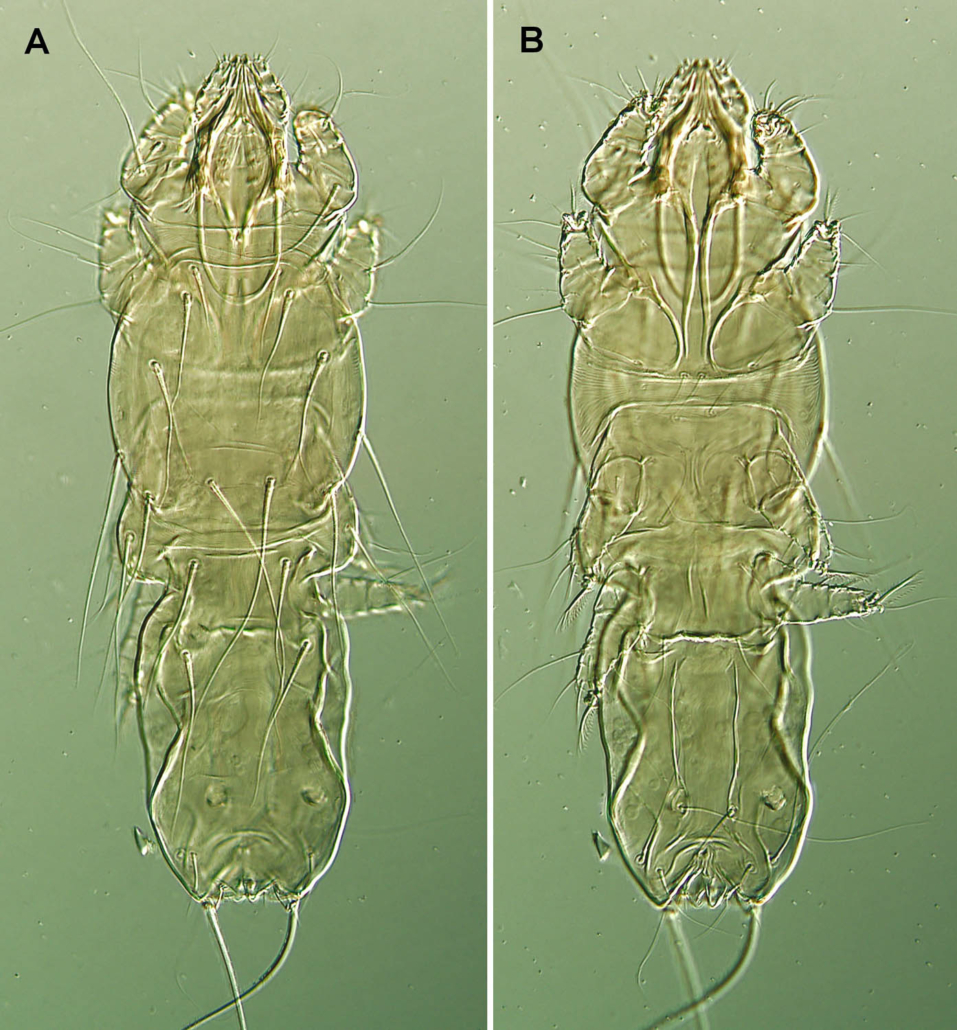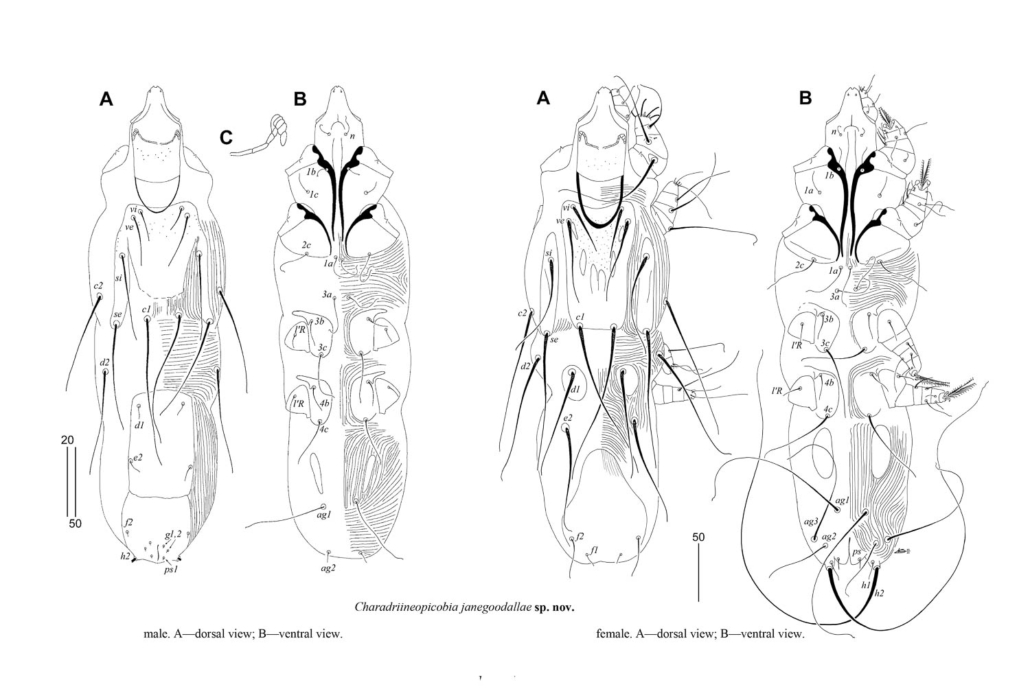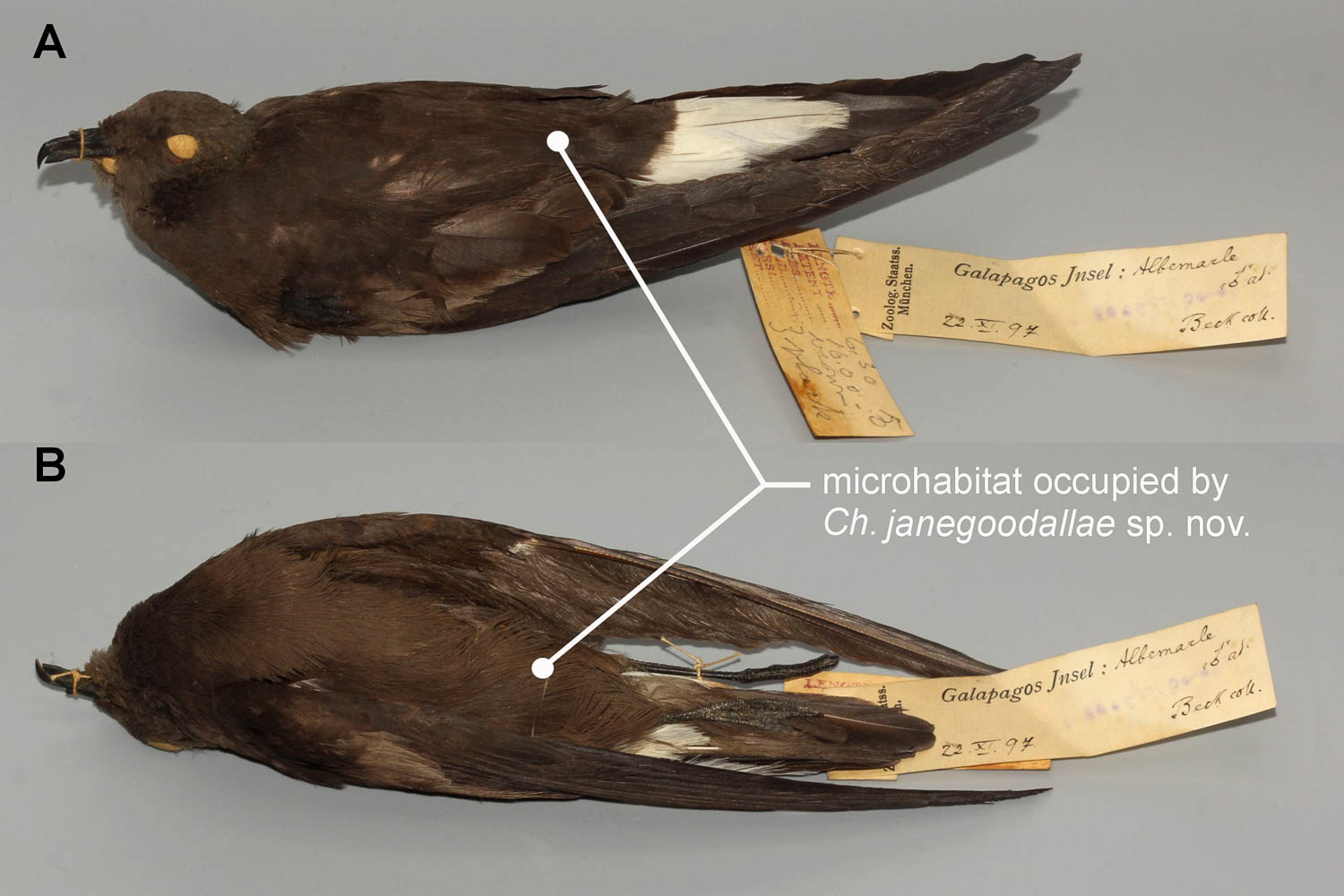Object of the Month May 2023
Jane Goodall’s Quill Mite Charadriineopicobia janegoodallae
Quill mites of the family Syringophilidae are small arachnids that live in the quill of feathers and feed on the blood of their hosts.
The main transmission from one individual to another seems to occur during copulation or from parents to offspring. This also explains why mite species have their own host bird species. But there are also species that can be found in several bird species. Either they had already parasitized a parent species before it split into several species – or hybridizations took place between different host species or even genera in that the mite transferred to and coped with the new host. This seems to have been the case, for example, with various birds-of-paradise species, as the find shows two quill mite species, each of which colonizes two different species of birds-of-paradise and of which natural hybrids are known.
In the case of the newly described quill mite Charadriineopicobia janegoodallae, however, transmission is unclear. The host of the type specimen is a Galápagos Wedge-tailed Storm-petrel Hydrobates tethys that was collected at 22nd November 1897. It is one of the smallest albatross relatives with a lenght of 14.5 – 16.5 cm (Wandering Albatross Diomedea exulans: 107 – 134 cm). As the genus name of the mite suggests, its species are usually found in waders of the order Charadriiformes, but not in tubenoses, Procellariiformes. In addition, it was the first discovery of a species of the subfamily Picobiinae in this bird order. Charadriineopicobia species live in the contour feathers of waders and were not be able to bite through the thicker quill walls of the larger tubenose species to get into the feather. However, the ancestors of C. janegoodallae succeeded!
This new species was named in honor of Dr. Jane Goodall, for her tireless efforts, 300 days a year and around the globe. The world-renowned primatologist began studying wild chimpanzees in Gombe Stream National Park in Tanzania in 1960. Through her precise powers of observation and empathy for our closest relatives, she made spectacular discoveries, such as the making and use of tools, hunting and meat consumption, and even warlike acts in chimpanzees. For many decades, as an environmental activist and UN Messenger of Peace, she has no longer been actively dedicated to research, but to environmental education for the preservation of habitats, biodiversity and thus a livable Planet Earth for all living beings. She has high hopes for the younger generation, for whom she launched »Roots & Shoots« in 1991.
4 facts about quill mites
- Little-known group: About 10 scientists worldwide are working on syringophilids. Prof. Maciej Skoracki from the Adam Mickiewicz University in Poznań is the leading specialist for this group and has been visiting the ZSM bird collection for more than 10 years.
- »From old birds to new species«: In the bird skins of the ZSM, some of which are already over 200 years old, 80 new species of syringophilides have so far been discovered with minimal intervention by plucking a few feathers. The type specimens of these mites are deposited in the section Arthropoda varia of the ZSM.
- Parasites as an aid to taxonomy: The quill mites, which are host-specific at generic and sometimes even species level, can be used to check relationships obtained in other ways.
- Harmful effect on the host? Whether feather quill mites have a negative effect on birds is not yet known. They could potentially act as vectors of viruses and bacteria circulating in the blood as they move to a new individual.
Pictures
Fig. 1: The symbolic handover of Caradriineopicobia janegoodallae to its namesake. Photo Copyright: Naturkundemuseum Bayern/Astrid Eckert
Abb. 2: Microscopical pictures of Caradriineopicobia janegoodallae. Photo: M. Skoracki
Abb. 3: In acarine publications, both sexes of mites are usually depicted in line drawings, since photos do not show the characteristics so clearly. Drawing: M. Skoracki
Abb. 4: The host Hydrobates tethys, in whose feather quills the mite was discovered, was collected on Isabela (= Albemarle) in 1897. Photo: M. Unsöld, ZSM
Abb. 5: Prof. Maciej Skoracki at his favourite place, the ornithological section of ZSM. Photo: M. Unsöld, ZSM
Markus Unsöld







 Foto Copyright: Naturkundemuseum Bayern/Astrid Eckert
Foto Copyright: Naturkundemuseum Bayern/Astrid Eckert Foto: M. Unsöld, ZSM
Foto: M. Unsöld, ZSM